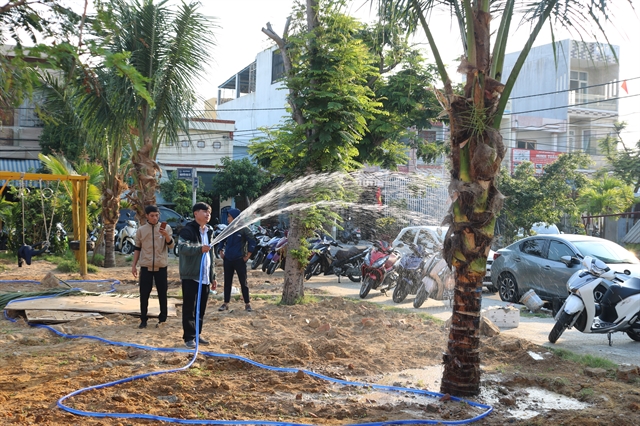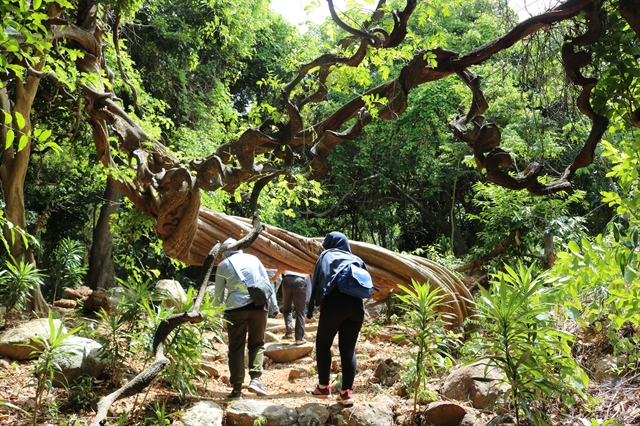The central city of Đà Nẵng, in co-operation with the NGO GreenViet, has launched the ‘One Million Trees Plantation’ project in public parks and pedestrian zones in Sơn Trà District to provide a ‘green’ shadow for the community and reduce air pollution.

Trees are planted at a public park in Sơn Trà district of Đà Nẵng. The city began the ‘One Million Trees Plantation’ project in 10 years. Photo courtesy of GreenViet
GreenViet said trees have been raised by the community, businesses and organisations for plantation at public parks in Hà Nội, Đà Nẵng and HCM City since 2019.
Sơn Trà District – home to 4,400ha of rich biodiversity in Sơn Trà Nature Reserve – is the first site in Đà Nẵng to launch the project.
According to GreenViet, more than 22,000 runners have joined the UpRace to raise funds for the project since 2019, and the first trees were planted in public parks in Sơn Trà District on Saturday before expanding to the other public sites.
Hoàng Hải Sơn, a co-ordinator of the project, said more green gardens will be built in the three cities with funding from communities, local people and businesses to improve the environment and fresh air in the most crowded urban areas in Việt Nam.
Last year, an eco-garden project, part of the ‘One Million Trees Plantation’ project, was launched in Quảng Nam Province to provide free education and a ‘green’ rehabilitation centre for 100 children with disabilities.
The Sơn Trà Nature Reserve, known for its rich biodiversity, is home to more than 1,300 red-shanked douc langurs and more than 1,000 plants and 370 animal species.

A view from the primary forest in Sơn Trà Nature Reserve in Đà Nẵng. The city has been conserving the reserve and planned more biodiversity protection sites in the future. VNS Photo Công Thành
The European Union (EU) has agreed to fund a biodiversity protection and environmental sustainability project in Đà Nẵng from 2020-23 with total funding of 650,000 euros.
Đà Nẵng has planned total funds of US$4.4 million for conservation, forest protection and afforestation as well as establishing new reserves on 43,722ha by 2030